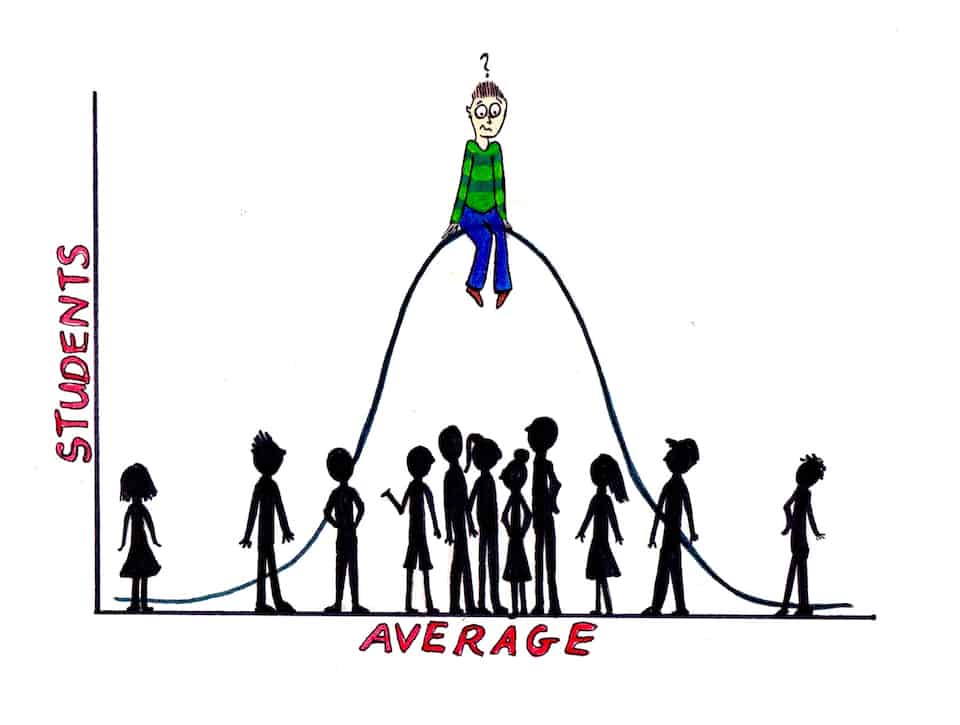[dropcap]A[/dropcap]s students at U of T, an institution notorious for both academic excellence and competitive atmosphere, we often fret about our CGPA. This number helps us quantify where we are in relation to the ‘average,’ which we take for granted as the appropriate measurement of our abilities.
Our obsession with standardization has seeped into all aspects of the culture. Generally, this has been seen as an improvement in society, or a way of making things more efficient.
Take, for instance, clothing sizes. By simplifying dimensions to three average options — large, medium and small — we have rid ourselves of the nuisance of having our measurements done every so often by a tailor, and waiting for custom-made clothing. The problem, however, arises when we attempted to graft this standardization onto qualities that are inherently subjective and multi-faceted. Think of what the words talent, intelligence, and character mean; how would you even begin to quantify these traits?
Yet, this is exactly what our school systems do, and to the detriment of students’ education. In his his new book, The End of Average, Harvard professor L. Todd Rose that our obsession with averages (and comparing ourselves to that number) is damaging for wholesome and effective learning.
This is because there is a conceptual error at the basis of “average-ism.” We wrongly assume that the sampling of many people at once will give us as valid results as measuring the same person numerous times. Consider average spending habits: the accurate way of measuring this would be to record what I spend for an extended period of time then average it out. This, however, is time consuming, so we simply opt for sampling a variety of people’s spending habits at one point of time then averaging those out.
The problem with the latter method is that it produces a number that rarely captures anyone. In a study of 4,000 United States Air Force pilots, none of them actually fit the average criteria of height, weight, arm length, leg length, etc. that was established to help construct the most usable cockpit seat.
Second, and perhaps more importantly, the human characteristics we want to foster in school — like communication skills, curiosity, and the capacity for critical thinking — cannot be accurately defined with numbers. In fact, they are highly contextualized.
“The very first large-scale study of character, still one of the largest ever, was done in the early 1900s by Hugh Hartshorne, an ordained minister and a scientist,” explains Rose. “He thought he was going to find character was a thing, a trait — if you were honest in one aspect of life, you’d be honest in all — and instead he found that’s not so.”
Certainly, there are mechanisms in our education system, not to mention job application process, that strive to include qualitative evaluation that will pick up on these shifting traits. Personal statements, cover letters, and interviews are abound. Yet, a prevailing convention is to use numerical standards like the CGPA to sift through students or applicants in the first round of evaluation, already disregarding groups of people whose capability may not be accurately captured by those numbers.
This “average-ism” mentality is contrary to the purpose of education. It prioritizes the ranking and sorting of students, instead of the development of their capacity to reach their full potential.
In order to move forward, we need to push back against standardization. Rose uses the Air Force analogy: when they realized standardized seats didn’t work, they created adjustable ones. Similarly in education, we should promote such flexibility in our standardized testing. Remove time-based evaluation, especially given that evidence shows speed and ability are uncorrelated. Lower barriers to accessing individualized help through tutoring. Above all, we should be open to imagining new ways that the education system can be more sensitive to individual needs.
Luke Jeagal is a second-year student at University College studying physiology and political science.


